The Joy of Camp Cooking
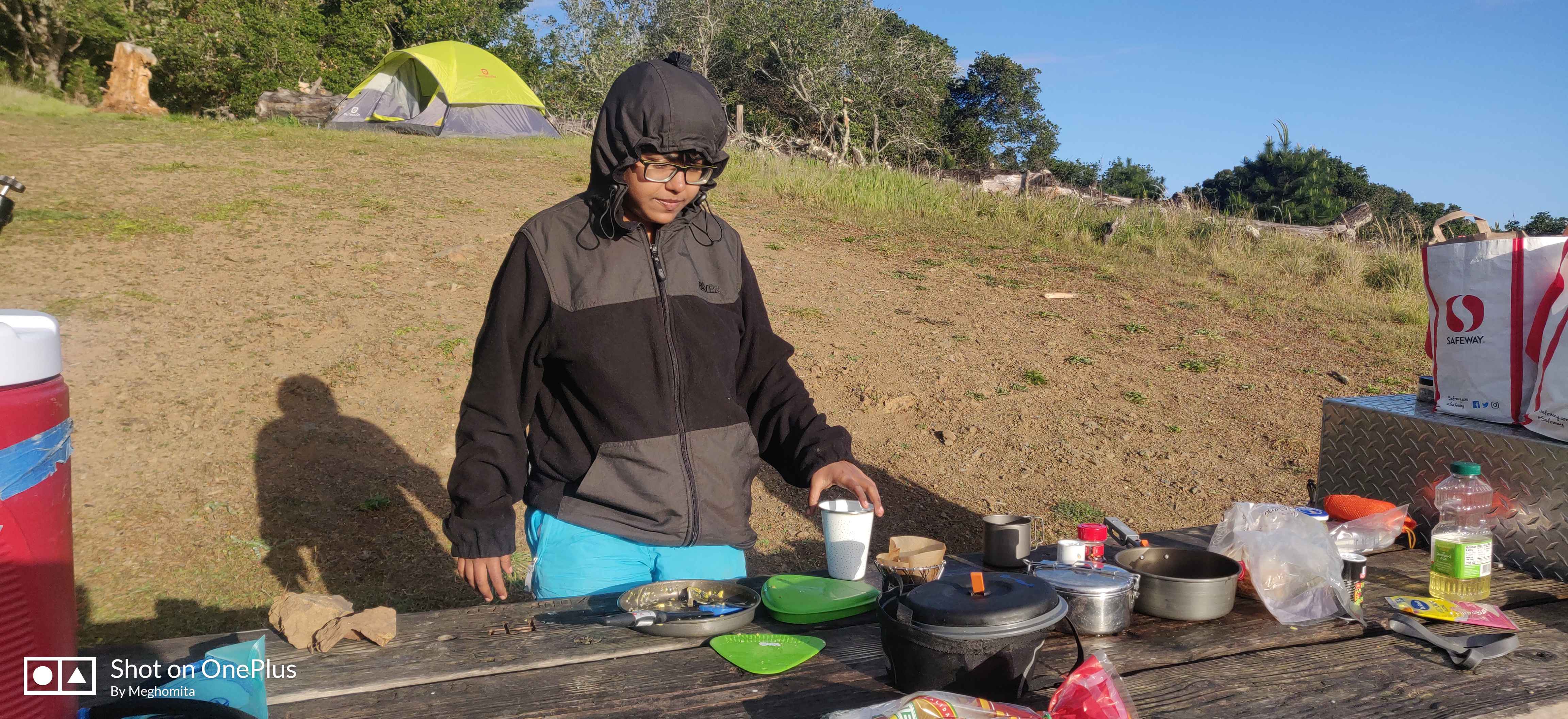 Prepping breakfast at our campsite on Angel Island on a chilly morning.
Prepping breakfast at our campsite on Angel Island on a chilly morning.
Fieldwork can be both the best of times and the worst of times. Best of times when the weather is on your side, your views from the campsite is magnificent and the rocks you are looking at are drop-dead gorgeous. It can be the worst of times when the above-mentioned weather tries to blow your tent, your campsite is on a slope without any flat area at all and the rocks are covered in poison oak. But there is a part of camping that unifies the best and worst of times. Camp food. Ask anyone and they will tell you that somehow camp cooked food tastes better. Maybe it is the dust, maybe is the smoke, maybe it is the fact that you produced something moderately edible in an environment that is not remotely close to ideal for cooking. Who knows, but the bottom-line is that camp food is delicious (terms and conditions apply).
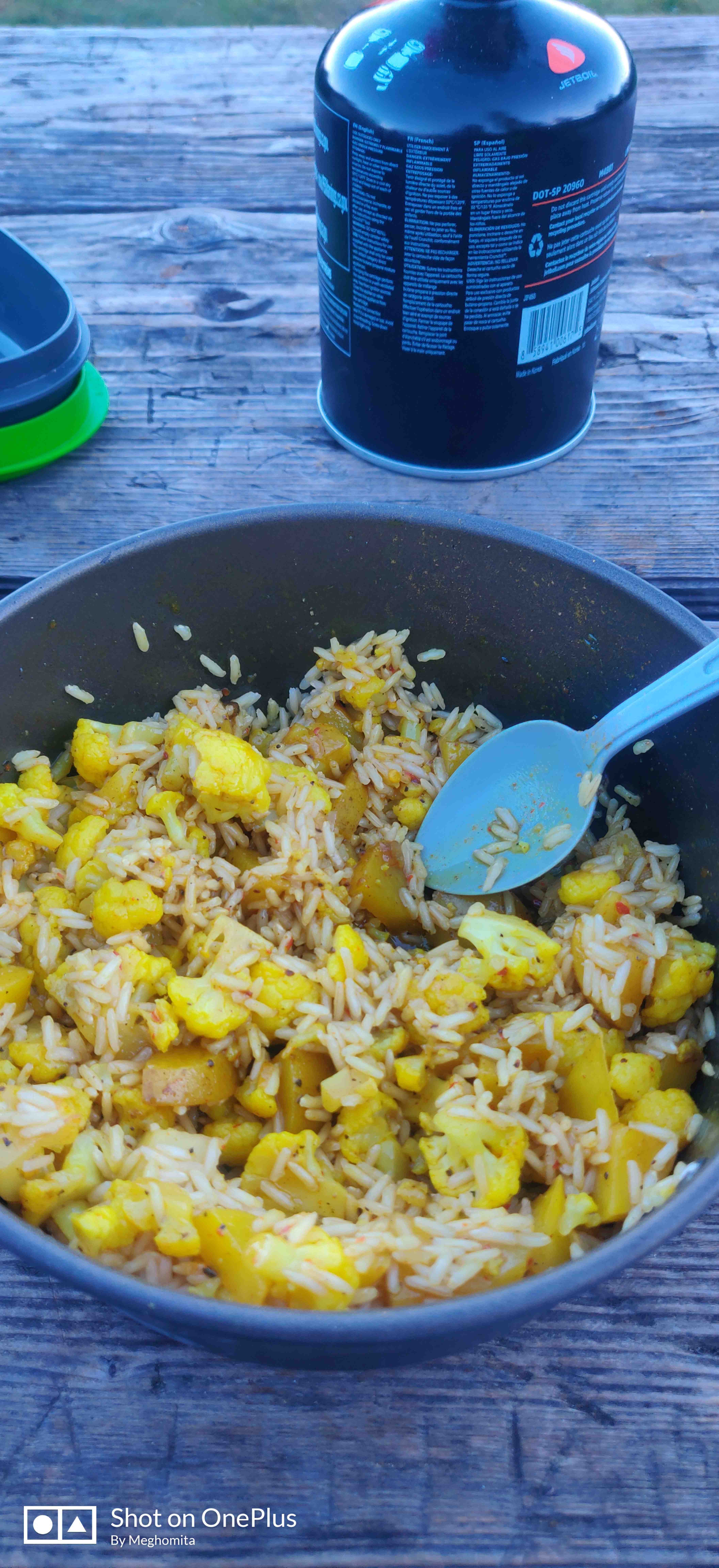
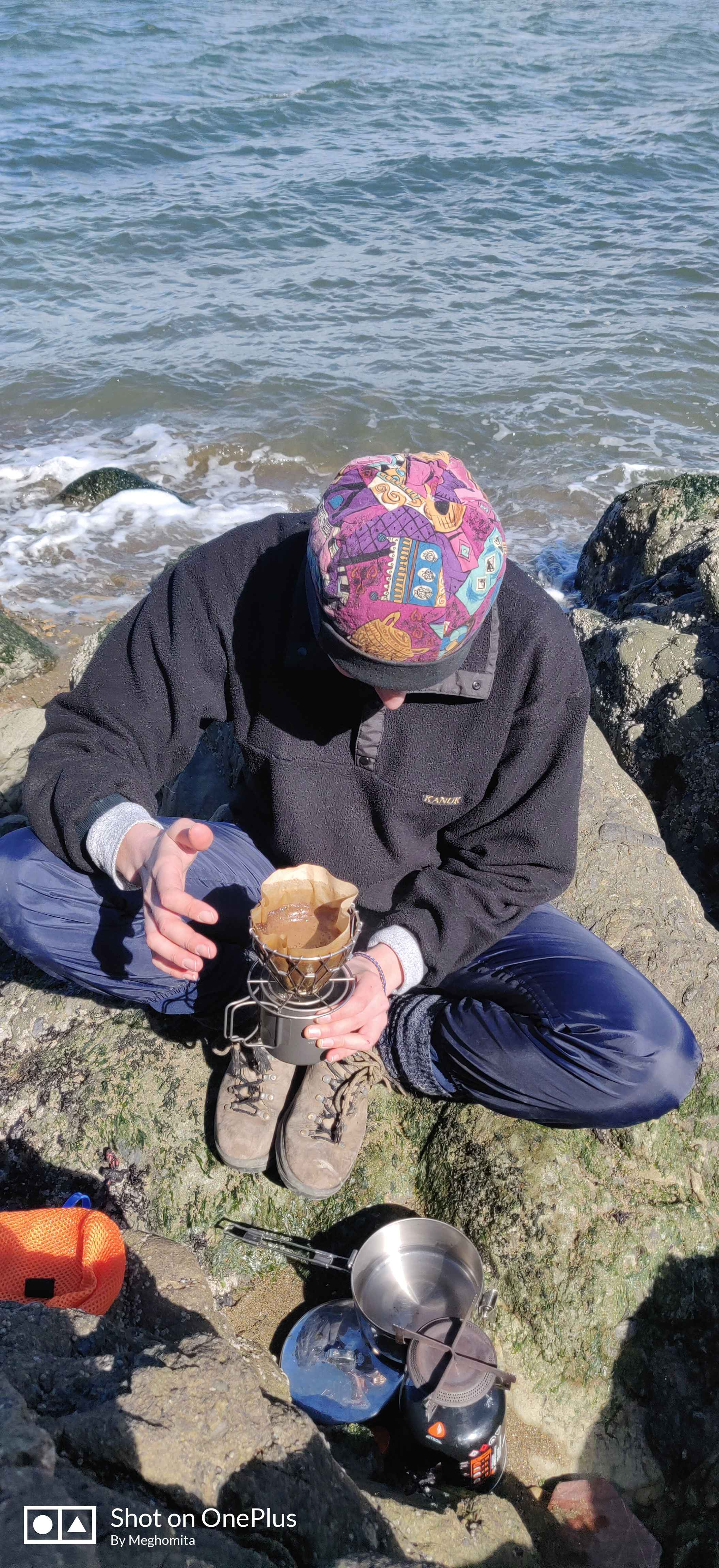 Left: A quick rice dish with fried potatoes and cauliflower. Right: Danny, my field partner, brewing up a cup of field coffee during our field day on Angel Island.
Left: A quick rice dish with fried potatoes and cauliflower. Right: Danny, my field partner, brewing up a cup of field coffee during our field day on Angel Island.
Camp food has some characteristics. It needs to be fresh, fast and fortified. Fresh because food storage is limited in the wilderness, and you do not want a raccoon going through your food stash if it is not locked properly in its designated raccoon proof locker. Fast in case the weather changes quickly and you are forced to cook in the rain or while you are getting attacked by a swarm of pesky mosquitoes. Neither of those conditions can be considered a pleasant environment for cooking. Economically, you also want to be efficient with your fuel usage. Running out of fuel in the middle of no-where and being forced to go hungry since you cannot cook any more food is also a no-bueno situation. Fortified (rather nutritious) because you need your energy to do fieldwork and you cannot survive on potato chips as your whole meal plan (trust me, I tried).
During my recent and belated fieldwork to Angel Island, we did some thorough research and trial-and-error testing for what works and what doesn’t (food-wise) over our 6-week field season. Here is how we broke down our meals and did our groceries for maximum efficiency and maximum tastiness. Let’s start with the groceries first. Take your shortcut wins. Grab that pre-chopped fajita mix pack, or that 3-minute pre-cooked rice bag that just needs a quick re-heat. Diversify your meal selections. Peanut butter and jelly sandwiches sound good for lunch occasionally but eating that over 6-weeks might cause some nutrition problems. And if I can provide one quick advice while anyone out there decides to make a random camp grocery list, add snack options. Add MULTIPLE snack options. Trail mixes, granola bars, fruits, juice boxes, chocolates, chocolate chips, chocolate covered raisins, you do you!
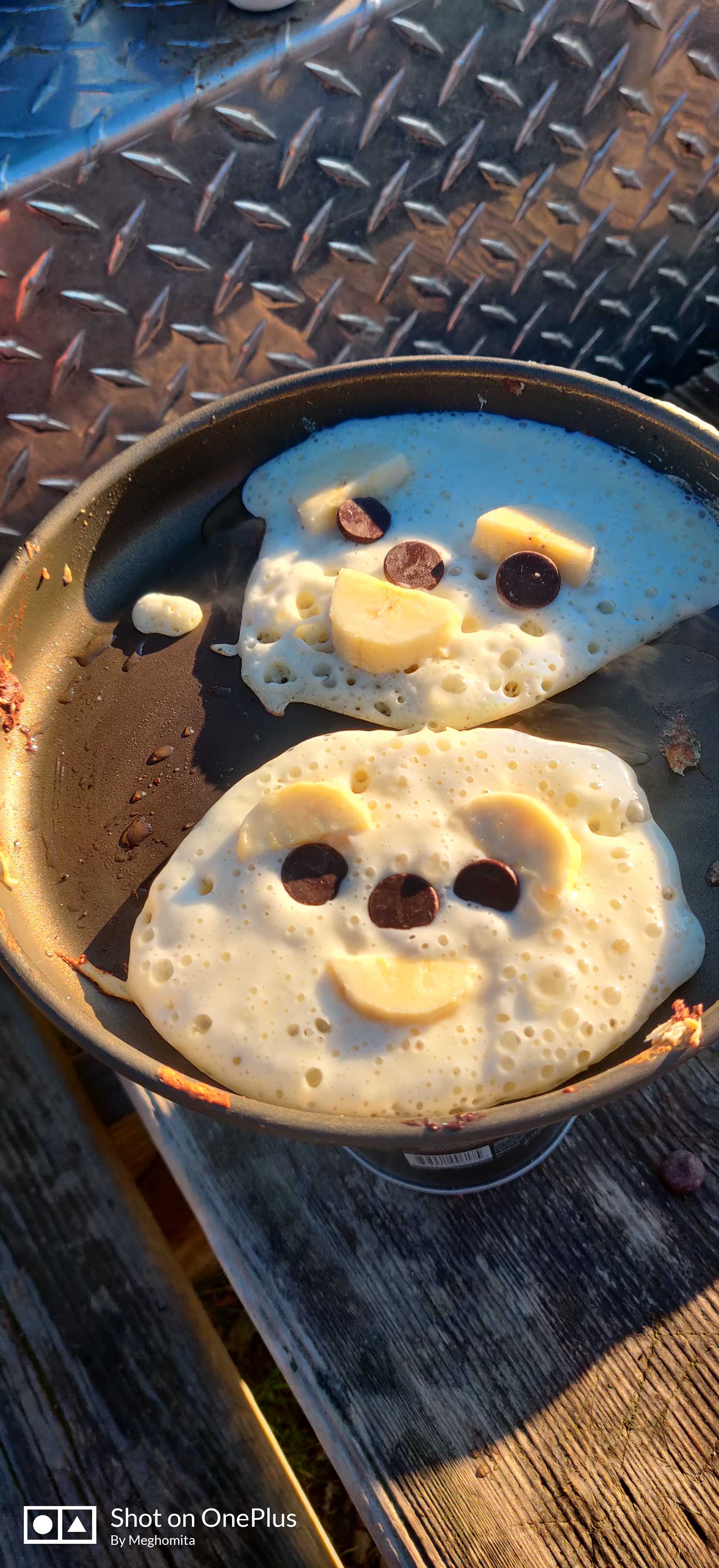
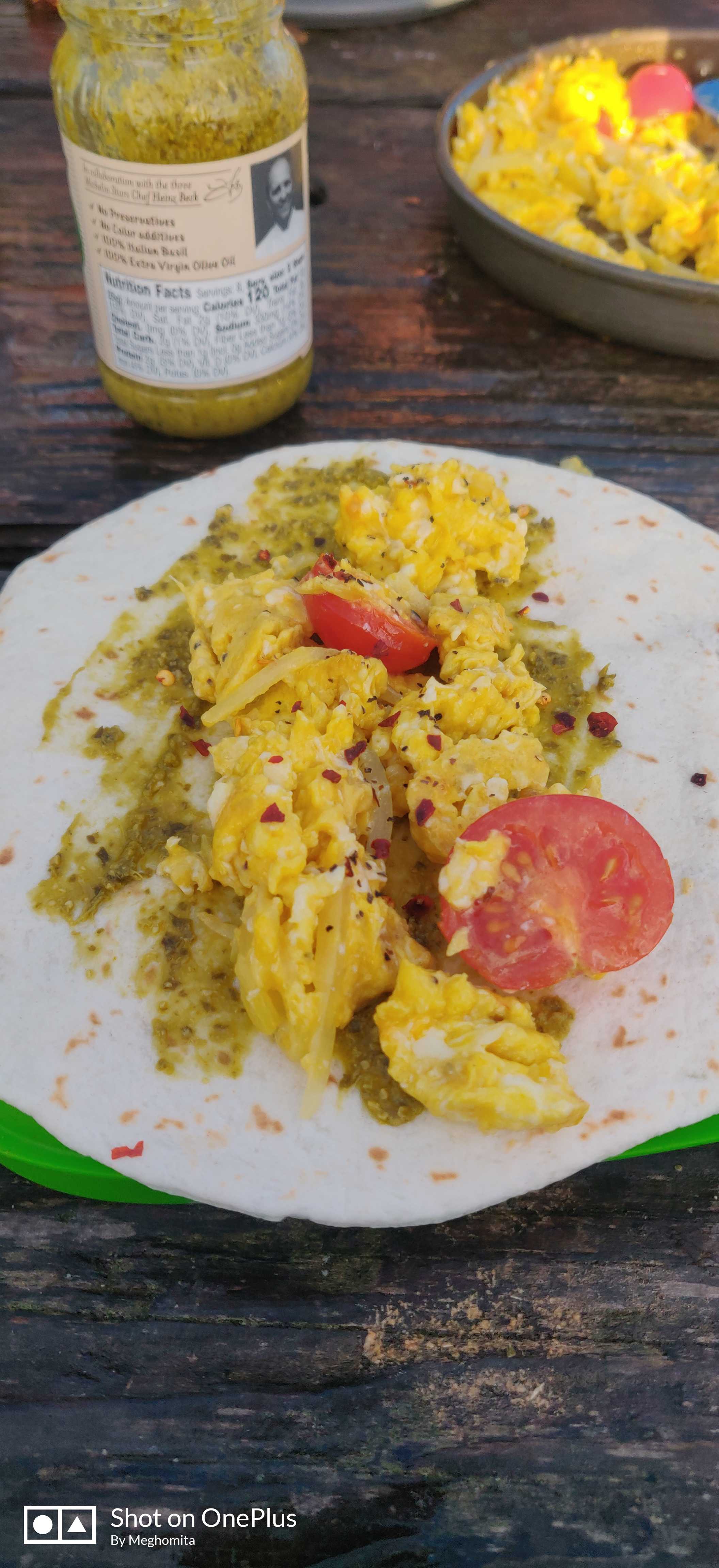 Left: Getting creative with our breakfast options, a quick pancake with choco chips and bananas. Right: Some quick and delicious breakfast burritos with pesto and fresh tomatoes.
Left: Getting creative with our breakfast options, a quick pancake with choco chips and bananas. Right: Some quick and delicious breakfast burritos with pesto and fresh tomatoes.
Now on to the meals. We decided to keep our lunches light but our dinners and breakfast options hearty. Scrambled eggs with pesto and cherry tomatoes burritos or pancakes for breakfast was our go-to. Coffee in the morning was essential. It was also essential during lunchtime and also as a late afternoon pick-me-up. We even had cereals with milk for some early morning sugar kick to get the day started. Lunch was always during field-day. We carried small lunch packs with us, found a flat looking rock or good-looking cliff for a lunch break. PB&J sandos, hummus with veggies, boiled eggs, tuna, and avocados on bread with a cuppa joe was our usual lunch plan. If we had a campsite stop during our field day, we had instant mashed potato with rehydrated gravy powder and boiled veggies or clam chowder with bread. On one occasion we substituted our regular lunch with some freshly caught jacksmelt from the Bay and mussels from our outcrop.
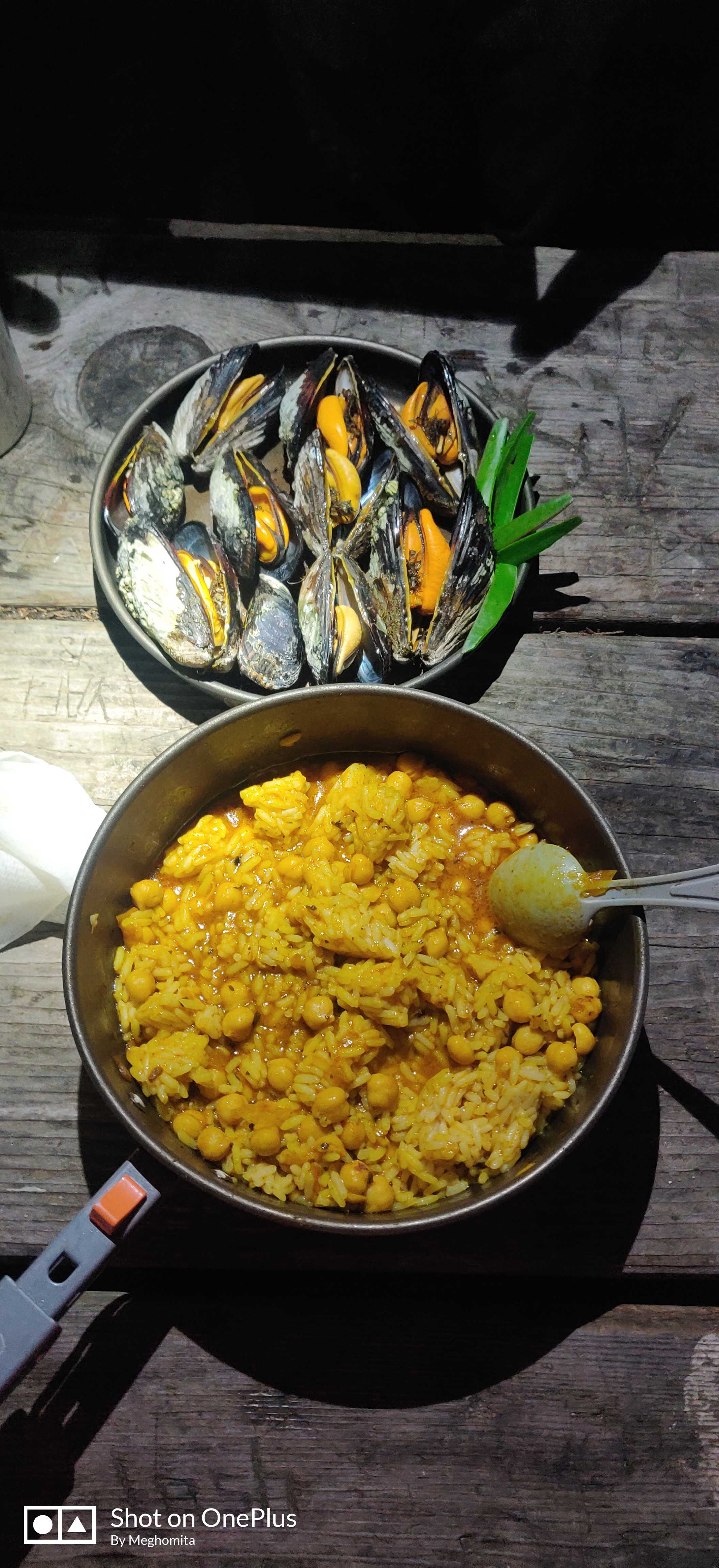
 Left: Dinner featuring chana masala with rice with a side of Angel Island mussels. Right: Quick and easy stir fry with veggies and noodles.
Left: Dinner featuring chana masala with rice with a side of Angel Island mussels. Right: Quick and easy stir fry with veggies and noodles.
Our snack game was strong. Cliff granola bars, regular granola bars, fruits, more coffee, trail mix with extra chocolate chips, peanut butter, and chocolate cups. Just sugar packed nibbles to get us over the finishing line of field day. By the time dinner rolled around, we were usually tired, so we embraced our shortcuts. Chickpea with pre-made tikka masala simmer sauce and pre-made rice. Noodles with peanut butter and teriyaki veggie stir fry. Pesto pasta and its multitude of variations with different veggies. Stir fried mushrooms with compound garlic butter situation. Essentially, a dump it all in one pot and forget-about-it dinner. Since we were camping on fire-risk areas, we could not have open woodfires. So, we went for after dinner hot chocolate (with an occasional side of beer and a game of cards).
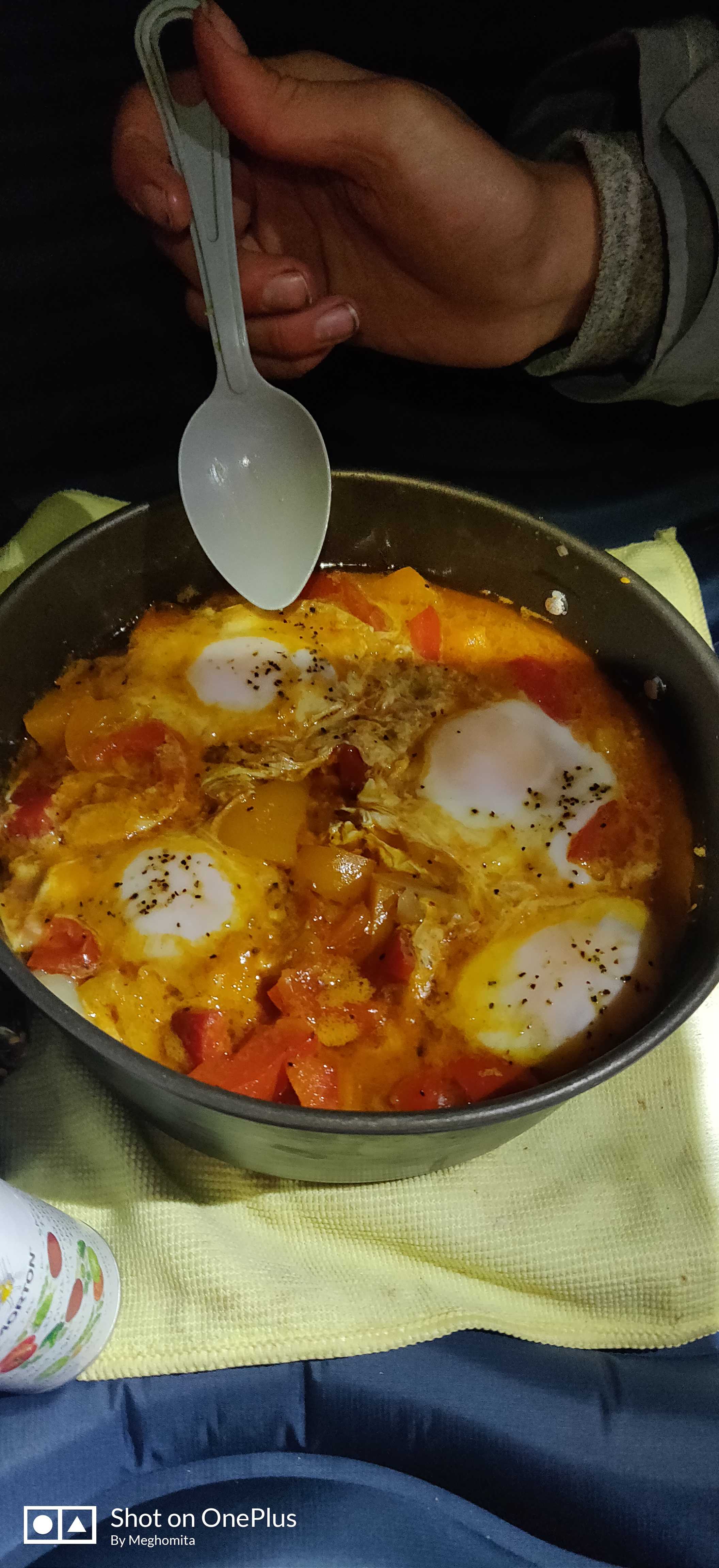 Eating shaksuka in our tent with the rain pouring down on our campsite. /span>
Eating shaksuka in our tent with the rain pouring down on our campsite. /span>
For me, my moments of cooking during field days were my way to disengage from the day and have a breather before I went back to praying that my tent doesn’t get blown away in the night or the coyotes start howling at a bit more distance than the night before. And even though some days we (read I) had to eat a bowl of crunchy rice with crunchy cauliflower curry, at least the views, the exhaustion of the day and the general pleasure of being out in nature definitely did bring me a lot of joy!